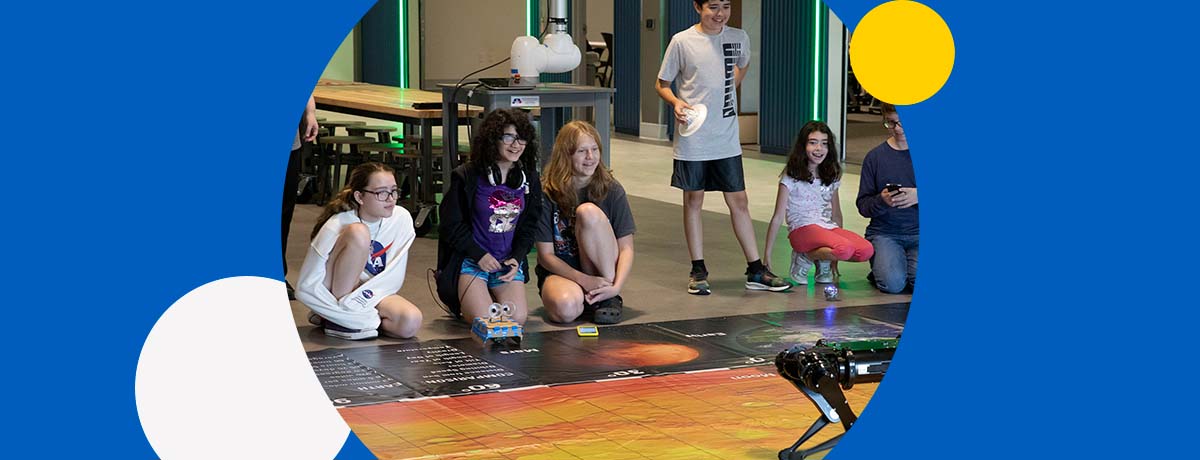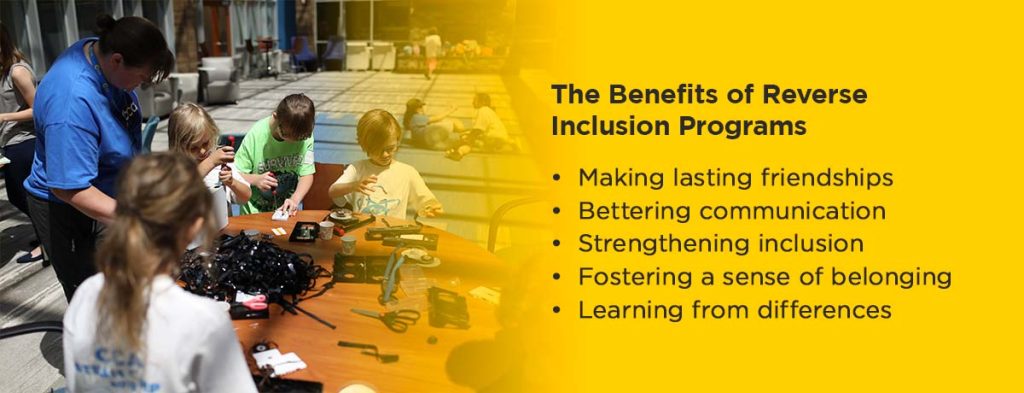2025-2026 School Year Enrollment Now Open. Click Here
2025-2026 School Year Enrollment Now Open. Click Here

Reverse inclusion offers benefits for every student. Although mainstreaming — placing a student with disabilities in a regular classroom to participate in ongoing activities with nondisabled students — provides unique experiences, reverse mainstreaming offers additional benefits for all students. Let’s discover what reverse inclusion is, the benefits it offers students, and how it differs from regular inclusion.
Reverse inclusion is the process of placing nondisabled students in a self-contained classroom with students with disabilities for a period of time. In some situations, putting special education inside the classroom is challenging. Reverse inclusion enables schools to provide unique student experiences while meeting each child’s needs.
In early grade levels, like kindergarten, students without disabilities might stay in the classroom for an extended period or the entire day. As they advance through education and persist through high school, they may spend time in a special education classroom for an allotted amount of time to spend time with students with disabilities.
Students in a reverse inclusion classroom can complete a wide range of activities. Young children in a reverse inclusion classroom may take on activities such as:
Older children can benefit from these classrooms as well. Activities should reflect their age to keep all students interested and engaged. Some activities you could find in reverse inclusion classrooms for older students include:

Reverse inclusion programs can create enriching experiences for students and enable more student collaboration and understanding. These classrooms offer a wide variety of benefits for students and provide positive environments for age-appropriate activities. These programs are beneficial for all students to create meaningful connections with their education and each other.
Reverse inclusion classrooms benefit all students. Students with disabilities and nondisabled students can come together to create unique and enriching academic experiences that they would otherwise miss. Additional benefits of these programs include:
These programs present many learning and growing opportunities for every student, but there are some obstacles that prohibit institutions from making the switch. Here are some of the most common barriers to reverse inclusion:
Students with disabilities and nondisabled students can benefit from interacting in a structured and supervised setting where either inclusion or reverse inclusion exists. These classrooms foster belonging, friendships, communication, and a sense of embracing diversity. Although both mainstreaming and reverse mainstreaming present benefits, reverse inclusion may be more beneficial for students.
Students with medical needs, violent behavior tendencies, or communication difficulties may face more obstacles in a traditional classroom, where they cannot easily have their needs met. In these cases, bringing nondisabled students into the special education classroom can be much more accommodating. Additionally, reverse inclusion is an excellent option for schools without the resources to provide an aide for every student with disabilities in the classroom.
Commonwealth Charter Academy understands that every child has unique needs, interests, abilities, and learning methods. With our personalized education programs, each of our learners can access the tools and resources they need to succeed in a way that’s meaningful to them.
At CCA, teachers and families collaborate to craft an academic experience that will benefit each student and foster a love of learning. When you enroll your child at CCA, you’re delivering more than a virtual education — you’re providing a dynamic, enhanced, and unique experience to your child.
CCA offers general education courses and an enriching special education program. Our program enables students and families to customize intervention strategies that empower them to become fully integrated into our virtual school from the safety and comfort of their homes. Request more information about our special education program to find out how we can help your child succeed.
2025-2026 School Year Enrollment Now Open. Click Here